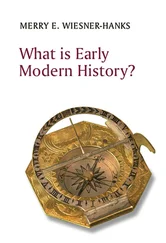R. Nisbet Bain - The Cambridge Modern History
Здесь есть возможность читать онлайн «R. Nisbet Bain - The Cambridge Modern History» — ознакомительный отрывок электронной книги совершенно бесплатно, а после прочтения отрывка купить полную версию. В некоторых случаях можно слушать аудио, скачать через торрент в формате fb2 и присутствует краткое содержание. Жанр: unrecognised, на английском языке. Описание произведения, (предисловие) а так же отзывы посетителей доступны на портале библиотеки ЛибКат.
- Название:The Cambridge Modern History
- Автор:
- Жанр:
- Год:неизвестен
- ISBN:нет данных
- Рейтинг книги:4 / 5. Голосов: 1
-
Избранное:Добавить в избранное
- Отзывы:
-
Ваша оценка:
- 80
- 1
- 2
- 3
- 4
- 5
The Cambridge Modern History: краткое содержание, описание и аннотация
Предлагаем к чтению аннотацию, описание, краткое содержание или предисловие (зависит от того, что написал сам автор книги «The Cambridge Modern History»). Если вы не нашли необходимую информацию о книге — напишите в комментариях, мы постараемся отыскать её.
The first series was planned by Lord Acton and edited by him with Stanley Leathes, Adolphus Ward and George Prothero.
The Cambridge Modern History Collection features all five original volumes:
Volume I: The Renaissance
Volume II: The Reformation, the End of the Middle Ages
Volume III The Wars of Religion
Volume IV: The 30 Years' War
Volume V: The Age of Louis XIV
The Cambridge Modern History — читать онлайн ознакомительный отрывок
Ниже представлен текст книги, разбитый по страницам. Система сохранения места последней прочитанной страницы, позволяет с удобством читать онлайн бесплатно книгу «The Cambridge Modern History», без необходимости каждый раз заново искать на чём Вы остановились. Поставьте закладку, и сможете в любой момент перейти на страницу, на которой закончили чтение.
Интервал:
Закладка:
In the course of the fifteenth century, some German students had resorted to teachers of the New Learning at various Italian centres. Among the earliest of these was Johann Müller (1436-76), born at Königsberg near Coburg, and hence known as Regiomontanus. He was the first who made humanism the handmaid of science. After working at Vienna under the astronomer Purbach, he went with Cardinal Bessarion to Italy, where he spent several years in studying Greek (1462-70). He translated into Latin the works of Ptolemy, the Conies of Apollonius of Perga, and other scientific treatises. Settling at Nürnberg in 1471, he founded an observatory, and made several improvements in practical astronomy. His Ephemerldes, the precursors of nautical almanacs, helped the Spanish and Portuguese explorers to navigate untravelled seas. Another of the German pioneers was Roelof Huysmann, known in literary history as Rudolf Agricola (1443- 85). Going to Ferrara in 1476, he attended the Greek lectures of Theodorus Gaza. Through the good offices of Johann von Dalberg, the scholarly Bishop of Worms, he was appointed to a professorship at Heidelberg. There, as also at Worms, he lectured on the Greek and Roman literature. He was an opponent of the scholastic philosophy as it existed in his day, and his best-known work, De Inventions Dialectica, was a plea for its reform. But his special claim to remembrance is that he was the first who systematically sought to make classical study an effective force in German education. He, and such as he, when they returned to Germany from their studies in Italy, found themselves in an atmosphere wholly different from that which surrounded the early Italian humanists. Erasmus has described the intellectual torpor which prevailed in Germany during his own boyhood and youth. The teaching of Latin was dull and meagre; Greek was scarcely taught at all. The masters were content with a few old hand-books, and wedded to outworn methods. Scholastic theologians and illiterate monks were equally hostile to the new humanism. It had, however, some powerful protectors, including the Roman King Maximilian; Joachim, the Elector of Brandenburg; Albert, Archbishop of Mainz; and, not least, Frederick, Elector of Saxony. Of the seventeen Universities, some, such as Vienna, Heidelberg, and Erfurt, admitted the New Learning, though in some others, such as Cologne, it was opposed. There were also groups of learned students at several centres, such as Basel, Strassburg, Augsburg, and Nürnberg; and there were some rising societies or academies, devoted to humane letters. But there was, as yet, no general or widely-diffused interest in the New Learning; while, on the other hand, there were powerful influences directly and strongly opposed to it. The first event which roused the public mind to a more active sympathy is connected with an illustrious name.
Johann Reuchlin (1455-1522) studied Greek at Paris, and also at Basel. He afterwards went to Italy. At Rome, in 1482, he heard Argyropoulos lecture on Thucydides, and was noticed by him as a student of great promise. He published some Latin versions from Greek authors, and some elementary Greek manuals which were used in German schools. But after 1492 his chief interest was in Hebrew,—mainly as the key of the Old Testament, but also on account of the Cabbala, that medieval system of Jewish theosophy which he regarded as helpful towards reconciling ancient philosophy with Christian doctrine. The same notion had been cherished by Pico della Mirandola (1463-94), who, like Reuchlin, had approached the Cabbala through Neoplatonism. Reuchlin’s views on the subject were set forth in his treatises De Verbo Miriflco (1494) and De Arte Cabalistica (1517). Thus alike on theological and on philosophical grounds Reuchlin was an enthusiast for Hebrew scholarship. He furnished it with several aids, including the grammar and lexicon (Rudimenta Hebraica) which he brought out in 1506. And it was as a defender of Hebrew letters that he became engaged in a struggle which went far to decide the immediate future of the New Learning in Germany.
In 1509 Johann Pfefferkorn, a converted Jew, sought from the Emperor Maximilian a mandate for the suppression of all Hebrew books except copies of the Bible. Reuchlin was consulted, and opposed the measure. He was then attacked by Pfefferkorn as a traitor to the Church. In 1514 he was accused by the Dominicans of Cologne, whose dean was the Inquisitor Hochstraten, in the ecclesiastical Court at Mainz. The Bishop of Speyer, acting for the Pope, acquitted him, and the decision was confirmed at Rome in 1516. This was an impressive victory for Reuchlin. Afterwards, on an appeal of the Dominicans, Rome reversed the previous judgment, and condemned him (1520); but that sentence passed unnoticed, and has come to light only in our own time.
Meanwhile the German humanists had taken up Reuchlin’s cause, which, as they saw, was their own. If Jews should be forbidden to read such an author as Maimonides, who was useful to St Thomas Aquinas, how could Christians be allowed to read Homer, who depicts the immoralities of Olympus? Never was intolerance a fairer mark for the shafts of ridicule. The first volume of the Epistolae Obscurorum Vir-orum, written chiefly by Crotus Rubeanus, appeared in 1514; the second, chiefly by Ulrich von Hütten, in 1517. The writers wield, with trenchant if somewhat brutal force, a weapon which had been used with greater subtlety by Plato, and to which a keener edge was afterwards given by Pascal. They put the satire into the mouths of the satirised. Bigots and obscurantists bear witness in dog-Latin to their own ineptitude. Reuchlin’s triumph in 1516 had an immediate and momentous effect on German opinion. A decided impetus was given to Hebrew and to Greek studies, especially in their bearing on Biblical criticism and on theology. This was the direction characteristic of the earlier humanism in Germany. Almost all the more eminent scholars were occupied, at least occasionally, with theological discussions. In 1525, three years after Reuchlin’s death, Erasmus wrote a letter to Alberto Pio, prince of Carpi (the pupil and benefactor of Aldo), in which he observes that the adversaries of the New Learning had been anxious to identify it with the Lutheran cause. They hoped, he says, thus to damage two enemies at once. In Germany, during the earlier half of the sixteenth century, the alliance between humanism and the Reformation was real and intimate. The paramount task which the New Learning found in Germany was the elucidation of the Bible. But the study of the classical literatures also made steady progress, and was soon firmly established in German education.
Foremost among those who contributed to that result was Melanchthon (1497-1560), though his services to humanism in earlier life are now less prominently associated with his memory than the part which he afterwards bore in the theological controversies of his age. It was from Reuchlin that the precocious boy, Philip Schwartzerd, received the Greek name, a version of his patronymic, under which he was to become famous. After taking his doctor’s degree at Tübingen in 1514, Melanchthon won notice by expositions of Virgil and Terence, which led Erasmus to hail him as a rising star of learning. He was only twenty-one when, in 1518, the Elector of Saxony, moved by Reuchlin, appointed him to the chair of Greek in the University of Wittenberg. It was characteristic of the man and of the period that he began with two concurrent sets of lectures, one upon the Epistle to Titus, and the other upon Homer; observing, in reference to the latter, that, like Solomon, he sought “Tyrian brass and gems” for the adornment of God’s temple. Luther, his senior by fourteen years, derived from him a new impulse to the study of Greek. Melanchthon did very important work towards establishing or improving humanistic education in the schools of Germany. In his Discourse on Reforming the Studies of Youth, a work imbued with the genuine spirit of the Renaissance, he advocated a liberal discipline of classical literature as the soundest basis of school-training, in opposition to the methods of instruction favoured by the older scholastic system. Many of the aids to classical study which Melanchthon produced (chiefly at Wittenberg) were popular school-books in their day. Among these were his Institutiones Linguae Graecae (1518); his Grammqtica Latino. (1525); Latin versions from Greek classics; and comments on various Greek and Latin authors. After Melanchthon may justly be named his friend and biographer Camerarius (Joachim Kammermeister, 1500-74), a prolific contributor to scholarly literature, whose edition of Plautus (1552) was the first that placed the text on a sound basis.
Читать дальшеИнтервал:
Закладка:
Похожие книги на «The Cambridge Modern History»
Представляем Вашему вниманию похожие книги на «The Cambridge Modern History» списком для выбора. Мы отобрали схожую по названию и смыслу литературу в надежде предоставить читателям больше вариантов отыскать новые, интересные, ещё непрочитанные произведения.
Обсуждение, отзывы о книге «The Cambridge Modern History» и просто собственные мнения читателей. Оставьте ваши комментарии, напишите, что Вы думаете о произведении, его смысле или главных героях. Укажите что конкретно понравилось, а что нет, и почему Вы так считаете.












